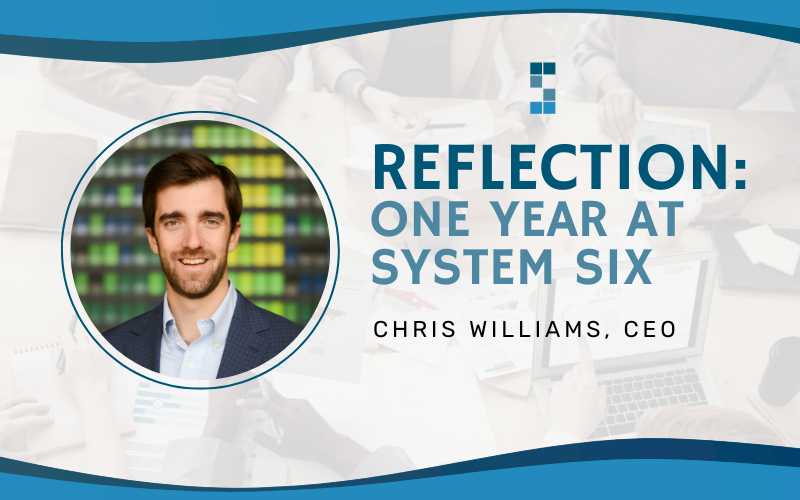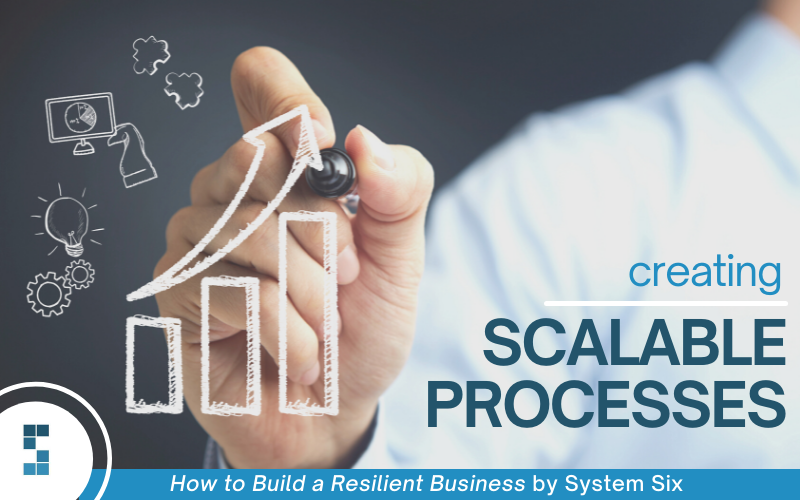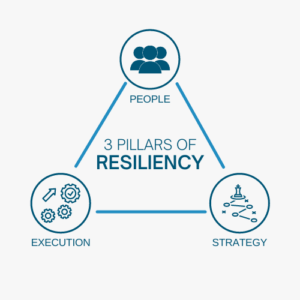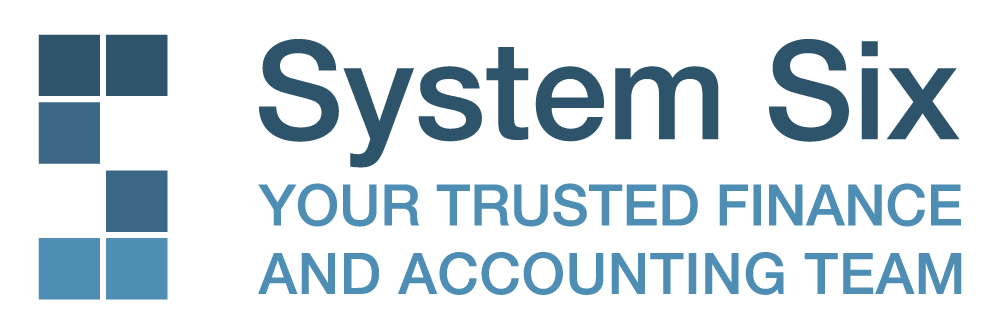
by Chris Williams | Sep 15, 2022 | Blog
Over Labor Day weekend, as a busy summer came to a close for System Six and for Blair and me personally, I was lucky to have some quiet time to sit back and reflect on my first year at System Six. I realized what an exciting, challenging at times, and certainly motivating year it’s been, and I thought I’d take some time to share some reflections on the year behind and all that’s ahead.
First and foremost, I’m thankful. Thankful to Jeremy, Joe, Kelly, Brooks, Lia, and the many people who built System Six over the past 13 years. They built a great business – one focused on bespoke, high-quality services using the right modern technology and processes. But more importantly, they focused its core, its ethos, on what matters most in our industry: People. They built a fantastic culture focused on joy and flexibility where the team delivers excellence, but also has fun along the way. So thank you for what you’ve built and for giving me the chance to usher System Six forward to the next level – one where we’ll continue to focus critically on making System Six the best place to work in cloud accounting.
I’m also thankful to our current team for welcoming me with an open attitude – especially to Brooks and Kelly, whom I worked with most closely out of the gate. They let me ask lots of questions and patiently listened to some not so great ideas. They let me accelerate our pace of growth, ran towards new tasks I asked of them, and allowed me to make changes to many well-established processes (meeting cadences, pay periods, hiring processes, etc.)
And to the broader team at System Six. Thank you. You, too, welcomed me with open arms, gave me a chance, and were quick to share ideas you had for improvement. Importantly, you continued to serve our clients with excellence and carried forward the most important part of System Six – our culture. I’m so thankful to work with and serve such a fantastic team. Keep it up!
And finally, I’d like to thank the broader Cloud Accounting community. Through conferences, early days coffee chats, leadership retreats, etc., many other leaders and vendors have welcomed me into the space. I’m thankful for the friendships built and the knowledge you’ve shared as we all scale our businesses alongside each other.
Next, I’m excited. Our near-term goals coming into System Six were first to honor the current business, team and core values, but next to start the journey to improve and scale our organization from one of ~20 people to one much larger, serving dozens and dozens more team members and hundreds and hundreds more clients. Thirteen months in, we’re well on our way. Of course, making fast progress towards our goals fires me up!
In a year of change, we’ve added 12 new team members and grown revenue by nearly 30%, serving over 40 new organizations from startups to scaled organizations to non-profits. There are lots of metrics we look at to monitor our business, but the one we’re most proud of is that over 90% of our job offers have been accepted. Candidates experience our culture during our extended interview process, and by the end of it, they want to come on board! This is our special sauce – our awesome team, and the fantastic culture they nurture.
Certainly, to accomplish all this, we’ve invested more across many aspects of our business, especially in hiring and new systems and processes internally, but we’re happy to remain healthily profitable. And of course, we’ve made mistakes along the way – internally and with clients – we are human. But all in, the last 13 months have been a great start to our vision for scaling System Six. And all of it is thanks to our great team.
Second, I’m excited for that very team! With growth comes opportunity – we’ve promoted several awesome individuals, given others expanded work or responsibility in their current seats, and bolstered our leadership capacity. We’re thrilled to have elevated Jaime to a Process Improvement Lead and Kelly to Head of People, a role she was already leading in many ways. As we continue to grow, I know our team will have more compelling opportunities, and I am excited to see who will step up and continue to advance their careers!
Finally, I’m motivated. Motivated to do better, both as a business, but also personally as a leader. A lot has gone right in the last 13 months. And I’m super thankful for that – we’ve worked hard, and our team has excelled. But, as we talk about internally, There’s Always Better! I’ve made some real mistakes this year – hiring too quickly, taking on complicated client projects without properly quoting costs, etc. And there are certain strategic goals we just won’t get to this year. We’ve learned a ton from these lessons, and already made improvements, but I know There’s Always Better – I can do more to deliver better outcomes for our clients and, most importantly, our team. And that’s motivating.
As I mentioned above, there’s so much demand for the services we provide. And that means there’s a clear chance to grow our team and deliver our workplace experience to more and more happy accountants. That dual-sided mission – to serve both clients and team – at an ever-increasing scale, inspires me to do better, even if just 1% better every day (shoutout to James Clear!) Over many years, if not decades, that can amount to something pretty impressive!
What an awesome year. It started with a smooth transition, largely thanks to the team that came before me and the current System Six team, who so graciously welcomed me and gave me a chance to learn. From there, both customers and team grew, validating our assumptions about the opportunities ahead of us. And we learned a ton, including from mistakes, and we can’t wait to bring those lessons to year two!
In the coming year, we’ll continue to hire and bring on new customers. But we’ll also implement new technology, add to our leadership team, and further systematize operations to support our growth – so that we can best serve our customers and our team. And we’ll never lose sight of our Northstar – building the best place to work in cloud accounting.
Onwards!

by Chris Williams | Sep 12, 2022 | Blog, Leadership
Annual Retreat for Our Remote Team
In late July, over 30 System Six team members and their partners gathered in Denver for several days of good old fun together! We all arrived on Friday at the beautiful Omni Interlocken Hotel, where the team spent the weekend enjoying the many wonderful things the resort had to offer – a great gym, a fun bar with pool tables, a driving range, great food and drinks, and of course, a ton of sun by the pool!
Friday night, we kicked off the weekend with dinner at Centro in Boulder – margaritas at dinner and to-go churros for our ride back to the hotel were especially big hits! Saturday, the team split up and went hiking, white water rafting, and museum exploring before reconvening for lunch. Several team members said they’ve now conquered their white water rafting fear and are looking forward to more challenging rapids next time! For lunch, we enjoyed cider, pretzels, and at the vista at Acreage by Stem Ciders. We finished just in time before the afternoon thunderstorms arrived.
We ended our weekend together on a high note – dinner at one of Denver’s hottest spots, the Happy Camper! Situated right in the middle of the restaurant, we cheered along as several adjacent groups celebrated birthdays, bachelorette’s and all kinds of joyful events!
While we packed in a lot of activity, we also were so thankful we had the chance to spend so much time together!
Being the Best Place to Work in Cloud Accounting
At System Six, our North Star is simple – to build the best place to work in Cloud Accounting. While we recognize we’ll never fully arrive at that goal, we are committed to always doing better. Our annual team gathering once a year is a joyful perk of working at System Six and provides us time to explore a new city, savor wonderful meals, and enjoy fun activities.
But, while we enjoy the time for it’s pure fun, our summer outings are even more powerful because of the connections we build with each-other. Especially in a remote environment, we know it takes time to get to know our peers and our managers, breaking the ice on Zoom meetings will never feel 100% natural; in person time is essential.
This is why our summer gatherings are so important, and why they’ll continue to be a priority of ours as we keep growing – we’ll just need more space next year! Of course our whole team can’t always attend, but we relish the opportunity to get to know one another, share some laughs (or screams on the river!), and to get perhaps just a bit too competitive at the pool table.
These small, unscheduled moments help us deepen our relationships, allowing us to better support each-other at work, solve problems faster, and appreciate one another more. It means virtual meetings feel a bit more natural when we truly know the person on the other side. All of these outcomes, we hope, make the day-to-day at System Six a bit more fun, joyful, and productive. Ultimately, we are building the best place to work in Cloud Accounting!
Many thanks to our team for making the trip this summer.We can’t wait to see you again next summer – in a location soon to be announced!

by Chris Williams | May 25, 2022 | Blog, Bookkeeping Best Practices, Leadership
Modern payroll is complex, covering everything from taxes to benefits to managing a variety of employees and contractors. As your remote finance team, we employ a robust tech-stack of cloud-accounting tools to streamline these exact payroll processes for you. These tools not only allow us to manage consistent, trustworthy compensation for your employees, but also provide best-in-class reporting capabilities and integrations with your accounting software.
But many may still be wondering, is outsourcing payroll really worth the investment?
If you’re a small business owner with only a few employees or have a history of managing payroll on your own, you’re probably hesitant to outsource this responsibility. Read on to see three ways that outsourced payroll provides value far beyond simply compensation management.
The Tax Arena
Paying employees properly is far more complicated than simply managing time, wages, and cash flow; you need to account for all of the complex tax details.
Outsourcing payroll includes offloading the coordination and liability of properly setting up and filing employees’ tax paperwork. System Six uses payroll specific tools like Gusto because, should a mistake or discrepancy arise in the tax filing process, Gusto takes on the responsibility of paying any fines and penalties associated with late or incorrectly filed returns.
With remote work growing in popularity and normalcy, registering employees for taxes isn’t simple. Small and big businesses alike employ remote workers across multiple states, cities, and municipalities. While this opens doors to valuable possibilities, it also creates new hassles in the onboarding process. In addition to differing tax codes, states have inconsistent implementations and descriptions of their rules and regulations. This can lead to confusion, mistakes, and possible penalties as you onboard employees.
When you outsource payroll, we ensure your employees are paid on time, but also partner with another firm, CorpNet, who assists with registering for tax accounts in states when you expand or hire in new areas of the country. CorpNet will communicate with each state on your behalf, ensuring that each state’s tax accounts are properly set up, submitting essential paperwork on your behalf.
Benefits Management
The second value-add of outsourced payroll tools is assistance with benefits management. A high priority for today’s workforce is the availability of benefits, including paid time off, insurance, and 401ks, just to name a few.
Just like tax registration can vary from state to state, benefit requirements vary also. For instance, certain states now mandate that all employees be provided paid time off, regardless of whether they are part-time or full-time. With remote work on the rise, employers may find employees working from states with varying PTO requirements.
Some outsourced payroll platforms have the capability of accounting for each state’s PTO requirements and codes. They can then track and manage PTO hours for employees, which is a huge time saver for business owners.
This is where we love using a tool like Gusto with our clients. Gusto offers both benefits packages through its own network of brokers and more recently added the ability to “bring your own broker.” This new feature allows its clients to reap the rewards of running benefits directly through the Gusto software while always maintaining a relationship with the broker of their choice.
While we’re singing Gusto’s praises, we need to mention a unique feature they now offer, the “Gusto Wallet” app. For the company with employees who occasionally request or find they need an advance on their paycheck, Gusto Wallet can be a lifesaver for employers and employees alike. Personally taking responsibility for and tracking advancements on payroll is risky and never advisable for business owners. With the Gusto Wallet app, however, employees can set aside monthly money from their checks that allow them to access emergency cash in between paychecks if the unexpected happens. Providing practical ways of making financial health a reality for employees is a huge benefit.
HR Tools & Support
The final added benefit is more robust HR tools. From advertising and managing job postings to job offers and onboarding to assisting with performance reviews, payroll platforms offer a lot of tools to help the modern business owner with HR responsibilities. For example, Gusto’s job postings integrate with popular job boards and their onboarding allows new employees to electronically sign custom documents, such as handbooks.
Some of these tools are newer to Gusto’s suite, and they can be a huge asset for businesses that need help getting off the ground and don’t have the necessary staff to take on all the HR functions themselves.
As a part of holistic client accounting services, we recognize the immense overlap between managing payroll and other elements of a healthy human resources department. Streamlining employee compensation goes hand in hand with caring for and supporting your employees. In simpler times, payroll was just a check every other Friday, but now payroll is intertwined with many facets of being an employer. Outsourcing this component of financial management is an incredible benefit to business owners; it allows them to focus on the business and not get lost in the financial complexities of PTO, benefits, family medical leave, and more.
Outsourced Payroll is for Everyone
These days it really doesn’t matter whether you’re a brand new start-up with just one employee or an established, multi-million dollar business – outsourcing payroll to a trusted partner is a great option for everyone. Simply put, the time, unnecessary costs, and headaches outsourcing saves employers are worth the costs.
So let’s talk – we are here to help companies set up and manage payroll as a part of our outsourced bookkeeping and accounting services. Whether you need to streamline your payroll processes, onboard employees across a range of states, or just need to get started with payroll, now is the time to integrate a fully tech-enabled set of financial systems to manage your business with efficiency and accuracy. And that will ultimately free you up to focus your time and energy on other priorities, like running their business, investing in their passions, or spending valuable time with family!

by Chris Williams | Mar 23, 2022 | Blog, Leadership
“Once upon a time, there were three little pigs…”
You probably remember this well-known and oft-repeated story from childhood storybooks and cartoons.
The three pigs each have a vision and mission – to build a house; a house resilient enough to weather the notorious big bad wolf’s destructive huffing and puffing. But while each pig has the same vision and mission, they each go about executing it in very different ways, which ultimately leads to very different outcomes.
It was Thomas Edison who once said, “Vision without execution is merely hallucination.”
It’s not enough to just have a clear vision and mission – you have to execute that vision successfully and to do that well, you need the right building blocks and tools.
If smart processes act as the bricks in resilient execution, then strategic, consistent rhythms are the mortar that holds those bricks together. Rhythms are the framework for getting the most value and efficiency out of your team’s processes.
Tools for Traction
Gino Wickman, author of the books “Traction” and “Get a Grip,” created EOS (Entrepreneurial Operating System,) which has become a popular tool to help businesses implement successful rhythms to keep their team cohesive, consistent and efficient. These rhythms “synchronize how people in an organization meet, solve problems, plan, prioritize, follow processes, communicate, measure, structure, clarify roles, lead, and manage.”
Utilizing an operating system of rhythms for your business promotes a culture of clear communication, discipline, and accountability. These values are integral to making your processes work effectively for your team.
While there are numerous areas in which a company could implement systemized rhythms, there are three areas in particular where successful rhythms really maximize the value of the processes most companies employ. These three areas are: meetings, measurement, and accountability.
Meeting Rhythms
Regular meetings within an organization are imperative in maintaining healthy and effective communication across teams and equally important for strengthening interpersonal relationships among team members.
While that might sound like just plain common sense, it is surprisingly easy to lose traction in communication and working relationships when rhythms aren’t in place to ensure meetings are consistent and intentional.
This is becoming increasingly true in a work culture in which remote employees are growing in number and co-workers on the same team can stretch across time zones and continents. Being intentional about regular rhythms of meetings is more important than ever.
Measurement Rhythms
You need rhythms to track various metrics and measurables within your organization to understand if you are accomplishing your goals and values.
Gino Wickman introduced the idea of the Scorecard Method in his book, “Traction.” Leadership must identify a set of measurements that can accurately indicate the health of your business. The correct metrics will be specific to you, but they usually include things like accounts receivable, customer survey results, cash on hand, and market penetration.
It’s essential to have realistic goals for these metrics and set a regular rhythm to measure and discuss them. They may also need periodic readjustment as your understanding of your business, customers, and goals shift over time.
Accountability Rhythms
There can be no real growth without accountability. Rhythms of accountability keep you on track to staying true to your company’s values as well as to your company’s goals.
Implementing tools like EOS’s scorecards keep employees accountable to the goals they have committed to, which leads to increased momentum and traction company-wide. Be cautious of two or more people sharing a responsibility; there’s a good chance that no one will end up with accountability.
Having processes and rhythms in place that allow your team members to give honest feedback is critical to maintaining a great work culture. They also help communicate clearly across teams which team members are accountable for specific tasks. A culture of healthy accountability is vital to fostering a great workplace culture.
A Strong Foundation Leads to a Resilient Future
The three little pigs each had a mission to build a resilient house, but in the end, only one pig’s house was strong enough to withstand the big bad wolf’s schemes. It was the house with a strong foundation, carefully laid with bricks and mortar, that proved the most resilient of all.
When it comes to building a resilient business, you need strong building blocks to lay a strong foundation. Those blocks are ultimately strategy, people, and execution. When you’ve got a solid mission and vision, the right people in place, and successful rhythms of scalable processes to execute your goals, your company is going to be strong enough to withstand any disruptions, adversity, and curveballs that come your way.

by Chris Williams | Mar 15, 2022 | Blog
Imagine for a moment that you own a pizza restaurant and have employed a talented team of chefs – but you fail to give them a step-by-step, process-driven pizza recipe to follow. What kind of product would your restaurant be delivering to your clients?
The fact is, even if you have an excellent vision for pizzas and Michelin-star winning chefs to make them, you would be highly unlikely to deliver consistent results without a recipe for your team to follow.
The same principle is true for business. You can have a solid mission, vision, and values statement and an amazing team of gifted people to carry it out. Still, without scalable processes for your team to follow, you risk delivering inconsistency in the quality of your products and services.

Execution – how you cook the recipe – is our third pillar of a resilient business.We believe excellent execution demands the creation and implementation of repeatable, scalable processes for your team to lean on and follow.
Why Processes Matter
It wasn’t until several years after launching System Six Bookkeeping that we began to truly realize the value and impact of creating and implementing processes for our company.
We had team members who used various preferred tools and strategies to stay on task and organized. Some employees preferred online resources, like Asana and Trello. In contrast, others preferred using an old-fashioned notebook, planner, and pencil to plan out and keep track of their work and schedule.
While these tools and strategies might have worked well for the individual team members, we realized not having a universal, centralized system would invariably cause inefficiency, confusion, miscommunications, and inconsistent quality for our customers.
It’s not enough to simply assign your team tasks and expect them to get the work done however they best see fit. Even if they ultimately produce good work using their own methods, your overall execution will lack the efficiency and cohesion necessary for a successful, resilient business.
It’s ultimately on your leadership’s shoulders to create and implement the right processes to set your team and your company up for success.
Step One: Creating Processes
We believe the same thoughtful intentionality you took to write out your mission, vision, and values statement should be applied to writing out your company’s scalable processes.
Take time, and if necessary, get away with your leadership team to work through and write down these important steps. Keeping your mission and values close to heart, write out the processes you want your team to execute.
What will your hiring process be? What steps are necessary for your team to follow in onboarding new staff and new clients? What is your month-close process?
No detail is too small as you create the processes your team will follow. Think through each element of your teams’ responsibilities and your clients’ journeys – is there a documented, clear pathway? Is there a consistent way to teach and train your team these steps?
Step Two: Implementing Processes
It’s important to note that when it comes to implementing processes, what works for a small, local team of 5-10 employees won’t necessarily work as well for a global team of 15 + remote employees.
For smaller teams working in the same office, a shared spreadsheet of word docs or a database of processes your team can access and share via cloud might be just the right avenue for implementation.
For larger teams, especially those with remote employees working from different locations and time zones, we are big fans of resources like Karbon, a workflow management software, to integrate team communication and collaboration.
Your leadership team can choose from many other cutting-edge tools and technologies to make accessing and implementing your company’s processes as easy as possible. Training and equipping your team is a critical component for success. Take time to ensure your onboarding includes thorough training on your programs and expectations for use.
Additionally, allowing your team members to provide regular feedback, criticisms, and improvements to your processes will build buy-in and ownership of your operations. Since your employees work in and out of these systems daily, provide pathways for them to provide input.
From thoughtfully writing down the processes that make sense for your business to adopting smart tools and technologies to make following those processes as natural as possible, you are setting your team up to execute your mission, vision, and values with excellence and success.
Join us next time as we dig into how to curate successful rhythms for resilient execution.

by Chris Williams | Feb 22, 2022 | Blog, Leadership
Attracting great talent is a key strategy to building a resilient business. Retaining that talent is equally important. The Great Resignation has opened our eyes to the importance of creating environments where employees can thrive. People aren’t only looking for robust retirement packages or attractive benefits portfolios; they want a strong company culture. Employee retention is at critical mass.
How does your team experience the place in which they work? Are they stressed and frazzled? Are their coworkers inclusive and diverse, or is it a competitive, homogenous environment? Do you actively support the work-life balance your employees desire? (Here are some signs your team is overwhelmed!)
A resilient work culture begins and thrives through attentive leadership that listens to their teams’ concerns and gives them the support they need to be successful.
Prioritize a Great Culture From the Start
All too often, unfortunately, companies confront their workplace cultures reactively instead of proactively.
Leadership coach and SSB client Aiko Bethea recently brought attention to this in her conversation about transformative workplace cultures with Brene Brown on the Dare to Lead podcast. “When something is important to you, and you value it, not only is it a priority, but it’s something you’re going to deal with intentionally.” Bethea goes on to say that companies often view priority through the lens of “yesterday” – reactively trying to fix issues instead of proactively working towards a better future.
Leaders who reactively rush into action to put out fires without being prepared or equipped can do more harm than good. Excellent workplace culture develops when employers intentionally support their teams from their first moments on the job.
Great Culture Starts With Onboarding
How you onboard new employees speaks volumes about how much you prioritize their success and well-being.
What will your employee’s experience be on the first day on the job? Is their equipment ready and waiting? Is essential login information for standard work programs like Zoom, Slack, and Loom prepared for them when they arrive on their first day? Have you fully briefed their coworkers and team about their role?
Whether you have people available to personally walk new employees through training, or you rely on technology and recordings to get your new team members started, it matters that there are resources and clear communication when you’re onboarding.
Great Culture is Strengthened Through Connectivity
Finding ways to make connections and build healthy working relationships are increasingly important to today’s workforce—employees who feel connected at work report higher states of well-being and job satisfaction.
With pandemic-related disruptions and the recent sharp rise in remote work, connectivity is increasingly challenging to cultivate.
The good news is that there are fantastic resources and technologies available today to make connectivity easy and enjoyable, even for remote teammates working in different time zones.
Implementing digital dashboards and similar tools, encouraging employee-led committees, carving out regular times for employee happy hours and social events – these are just a handful of simple ways to promote connectivity, and all of them can be done both in-person or remotely.
Websites like Confetti.com have a wealth of team-building activity ideas and tools if you need some help getting started. It’s important to note, however, that connection building needs to come from a genuine, authentic interest in the people who are on your team.
Great Culture Is Sustained Through Investing in Development
Resilient businesses treat their teams like people, not disposable resources. That’s why investing in your employees’ development is critical to creating a great work culture.
Rarely is someone content to stay in the same position and role for a lifetime. Employees want to learn, grow, and rise in rank. Consider offering regular educational and training opportunities to help your team acquire new skills and grow. Create a culture that celebrates development and advancement.
A resilient business’s goal should be to help its people grow into the seats they want. This takes intentionality, trust, and support; ultimately, good leadership. Listening and responding to your employee’s concerns and goals demonstrates empathy, compassion, and commitment. When employers invest in their development, employees feel more valued and loyal.
From setting them up for success on their first day on the job to cheering them on as they grow into the roles they want, you won’t regret intentionally investing in your team. Showing your employees you want them at your company is the best way to ensure they stay. Remember, their success is ultimately your success too.
Page 1 of 612345...»Last »


















